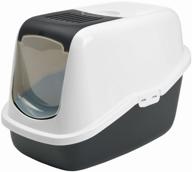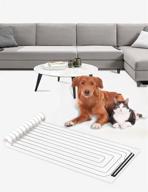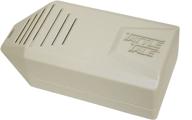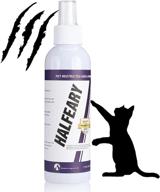How to stop cats from scratching furniture?
Cats have a natural instinct to scratch objects as a way to remove the dead outer layer of their claws and mark their territory. While this behavior is normal, it can damage furniture and be frustrating for cat owners. Here are some tips to stop cats from scratching furniture:
Provide appropriate scratching posts
- Get tall, sturdy scratching posts that allow cats to stretch and scratch vertically.
- Use posts covered in sisal, cardboard or carpet so they can dig their claws in.
- Place posts near furniture cats try to scratch.
Use deterrents on furniture
- Put double-sided sticky tape on furniture to deter scratching.
- Use citrus-scented sprays to make furniture unappealing.
- Attach plastic, vinyl or knit booties over couch legs.
Trim nails regularly
Trim your cat's nails every 1-2 weeks so they have less claw to dig into furniture. Avoid trimming too short as this can hurt cats.
Consider cat-friendly furniture
When buying new furniture, look for scratch-resistant fabrics like microfiber or leather. Place washable blankets over couch cushions for easy cleaning.
Another interesting products
Use rewards
Give treats and praise when cats use appropriate scratching posts. This positive reinforcement can encourage them to scratch there instead of furniture.
With some patience and training, cats can be taught not to damage furniture. Providing suitable outlets for natural scratching behavior is key to protecting your home.
How to keep pets off couches and beds?
It can be frustrating when pets jump on furniture or sleep in beds. While it's tempting for them, pet hair and dirt on furniture is undesirable. Here are some tips to train pets to stay off couches and beds:
Use deterrents
- Place double-sided sticky tape on furniture which pets dislike stepping on.
- Lay aluminum foil or plastic carpeting protectors upside down to startle pets.
- Use motion-activated devices that emit loud sounds or bursts of air when pets jump up.
Similar products
Block access
Restrict access to furniture using baby gates, furniture covers or closed doors. This removes the opportunity for pets to jump up.
Provide alternatives
Give pets their own beds on the floor so they have an appealing place to sleep instead.
Train with commands
- "Off" - Teach pets to get off furniture when given this command.
- "Place" - Train pets to go to their own bed or mat when told.
Use rewards
Reward pets with treats when they get off or avoid furniture. This positive reinforcement can help change their behavior.
Exercise pets
Make sure pets get adequate daily exercise so they are less inclined to jump on furniture to get your attention.
Protect furniture
Cover couches with blankets or buy scratch-resistant furniture to minimize damage from pets. Wash covers frequently.
With consistent training, pets can learn your furniture is off limits. Have patience and provide them with suitable alternatives.
How to train pets not to go on furniture?
Pets jumping on furniture can be a frustrating habit. With proper training, pets can learn that furniture is off limits.
Use deterrents
Make furniture less appealing by using:
- Double-sided sticky tape
- Tin foil or plastic carpet protectors
- Scat mats that emit mild static shocks
Block access
Restrict access to furniture using:
- Baby gates in doorways
- Furniture covers
- Closed doors
Provide alternatives
Give pets appealing places to sleep, like beds and mats on the floor.
Use commands
Teach pets to respond to commands like:
- "Off" - To get off furniture
- "Place" - To go to their bed or mat
Reward wanted behavior
When pets get off furniture or go to their own bed, reward them with praise and treats.
Remove rewards
Don't pet, play or interact with pets while they are on furniture.
Be consistent
Train pets every day and get all family members to enforce the rules.
Use correction
Issue a firm "No" or startle pets with loud noises when they jump on furniture.
With time and consistency, pets can learn to keep off couches, beds and other furniture. Patience is key when training pets.
How to Protect Furniture from Pet Damage?
Pets can take a toll on furniture with scratching, chewing, and accidents. Protect your furnishings while keeping pets happy with these tips.
Use Scratching Deterrents
For cats that claw furniture, make surfaces unappealing:
- Apply double-sided sticky tape
- Use anti-scratch sprays containing citrus or pepper
- Place plastic, vinyl or knit booties over couch and chair legs
Provide Appropriate Scratching Posts
Give cats suitable scratching outlets like:
- Tall, sturdy posts covered in sisal, cardboard or carpet
- Horizontal scratch pads on floors
- Place near furniture cats try scratching
Cover Vulnerable Areas
Protect couches and chairs with:
- Removable, washable slipcovers
- Blankets or quilts
- Furniture throws
Choose Pet-Friendly Fabrics
When shopping for furniture, look for more durable fabrics like:
- Leather
- Denim
- Microfiber
- Olefin
Clean Accidents Thoroughly
For urine stains or odors:
- Blot wet stains immediately
- Use an enzymatic cleaner to break down odors
- Steam clean or shampoo upholstery
Apply Bitter Sprays
Deter chewing by spraying non-toxic bitter flavors on furniture edges and legs.
With some smart prevention, pets and furniture can co-exist peacefully. Focus on providing suitable outlets and covers.
How to Set Boundaries for Pets Indoors?
Setting clear boundaries can help pets understand what is expected of them inside your home. Here are some tips for establishing rules:
Use baby gates
Install baby gates to block off rooms you want to keep pets out of, like:
- Bedrooms
- Bathrooms
- Kitchen
Close doors
Keep pets out of problem areas by keeping doors shut to rooms like:
- Mudroom
- Laundry room
- Garage
Confine pets when unsupervised
Use crates, exercise pens or small pet-proofed rooms to restrict access when you can't monitor them.
Provide designated pet zones
Give pets their own space like beds, mats or doggie dens where they can relax.
Keep off-limit areas unappealing
Use scat mats, aluminum foil or double-sided tape to deter pets from unwanted spots.
Interrupt and redirect
If pets enter prohibited zones, immediately interrupt the behavior, lead them away, and redirect to a designated area.
Use commands consistently
Teach cues like "off", "out", or "place" and practice daily.
Be patient and consistent in reinforcing boundaries. This helps pets understand what's expected and where they are allowed.



























